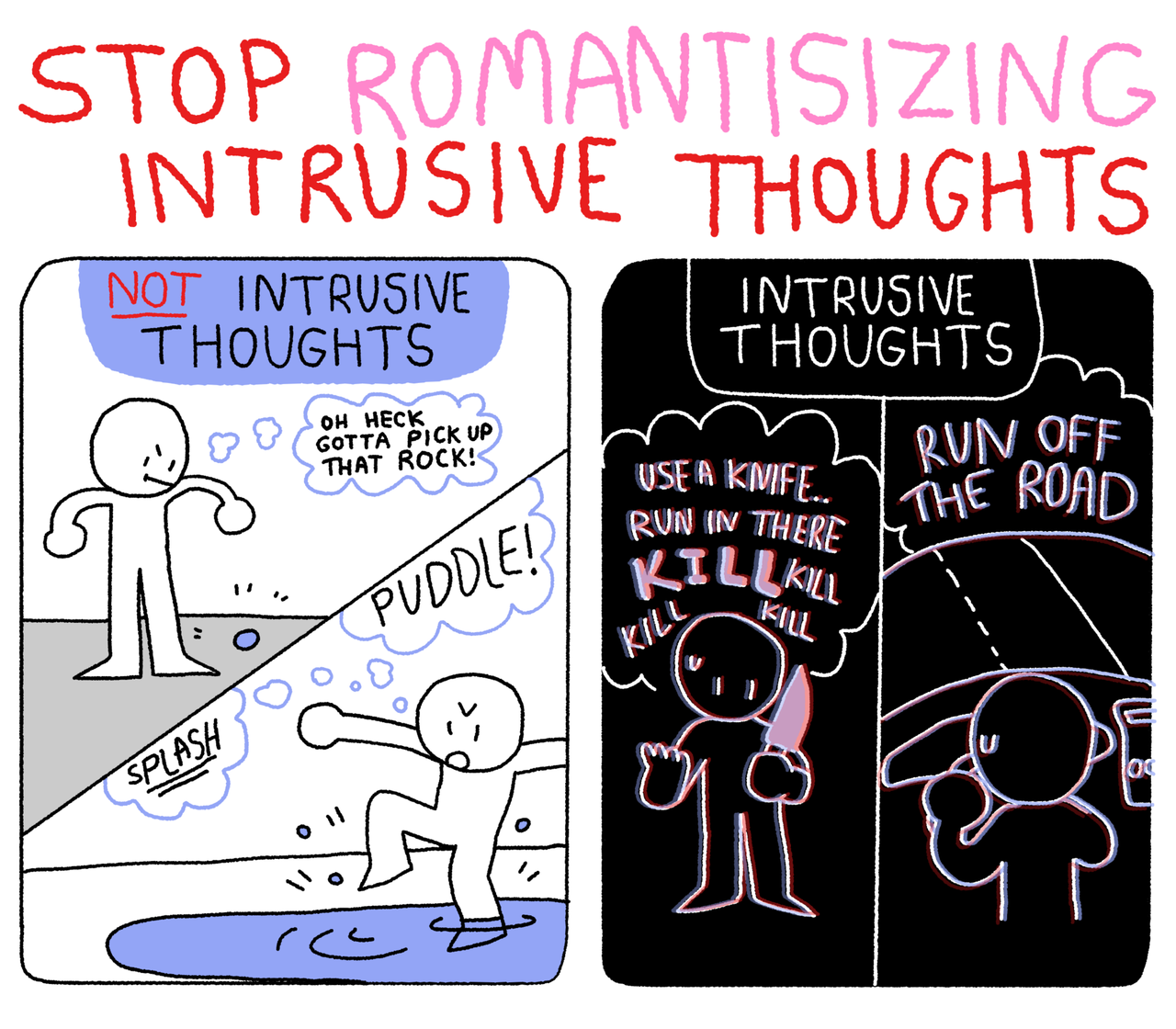

imagining or wishing harm upon someone close to oneself.Rachman's survey of healthy college students found that virtually all of them had intrusive thoughts from time to time, including: These thoughts can include harming a child jumping from a bridge, mountain, or the top of a tall building urges to jump in front of a train or automobile and urges to push another in front of a train or automobile. They can be related to primarily obsessional obsessive compulsive disorder. Intrusive thoughts may involve violent obsessions about hurting others or themselves. According to Lee Baer, a patient should be concerned that intrusive thoughts are dangerous if the person does not feel upset by the thoughts, or rather finds them pleasurable has ever acted on violent or sexual thoughts or urges hears voices or sees things that others do not see or feels uncontrollable irresistible anger. Patients who are not troubled or shamed by their thoughts, do not find them distasteful, or who have actually taken action, might need to have more serious conditions such as psychosis or potentially criminal behaviors ruled out. Patients who are experiencing intense guilt, anxiety, shame, and are upset over these thoughts are very different from those who actually act on them. The possibility that most patients with intrusive thoughts will ever act on those thoughts is low. However, accepting the thoughts can be more difficult for persons with OCD. These results may be related to underlying cognitive processes involved in OCD. In one particular study, those instructed to suppress intrusive thoughts experienced more distress after suppression, while patients instructed to accept the bad thoughts experienced decreased discomfort. There is evidence of the benefit of acceptance as an alternative to the suppression of intrusive thoughts. According to Lee Baer, suppressing the thoughts only makes them stronger, and recognizing that bad thoughts do not signify that one is truly evil is one of the steps to overcoming them.

Carrying out the compulsion reduces the anxiety, but makes the urge to perform the compulsion stronger each time it recurs, reinforcing the intrusive thoughts. Intrusive thoughts can occur with or without compulsions. How people react to intrusive thoughts may determine whether these thoughts will become severe, turn into obsessions, or require treatment. Distinguishing them from normal intrusive thoughts experienced by many people, the intrusive thoughts associated with OCD may be anxiety provoking, irrepressible, and persistent. The thoughts may become obsessions that are paralyzing, severe, and constantly present, these might involve topics such as violence, sex, or religious blasphemy, among others.

The suppression of intrusive thoughts often cause these thoughts to become more intense and persistent. When intrusive thoughts occur with obsessive-compulsive disorder (OCD), patients are less able to ignore the unpleasant thoughts and may pay undue attention to them, causing the thoughts to become more frequent and distressing. Such thoughts are universal among humans, and have "almost certainly always been a part of the human condition". Psychologist Stanley Rachman presented a questionnaire to healthy college students and found that virtually all said they had these thoughts from time to time, including thoughts of sexual violence, sexual punishment, "unnatural" sex acts, painful sexual practices, blasphemous or obscene images, thoughts of harming elderly people or someone close to them, violence against animals or towards children, and impulsive or abusive outbursts or utterances. For most people, intrusive thoughts are a "fleeting annoyance". Many people experience the type of bad or unwanted thoughts that people with more troubling intrusive thoughts have, but most people can dismiss these thoughts.


 0 kommentar(er)
0 kommentar(er)
